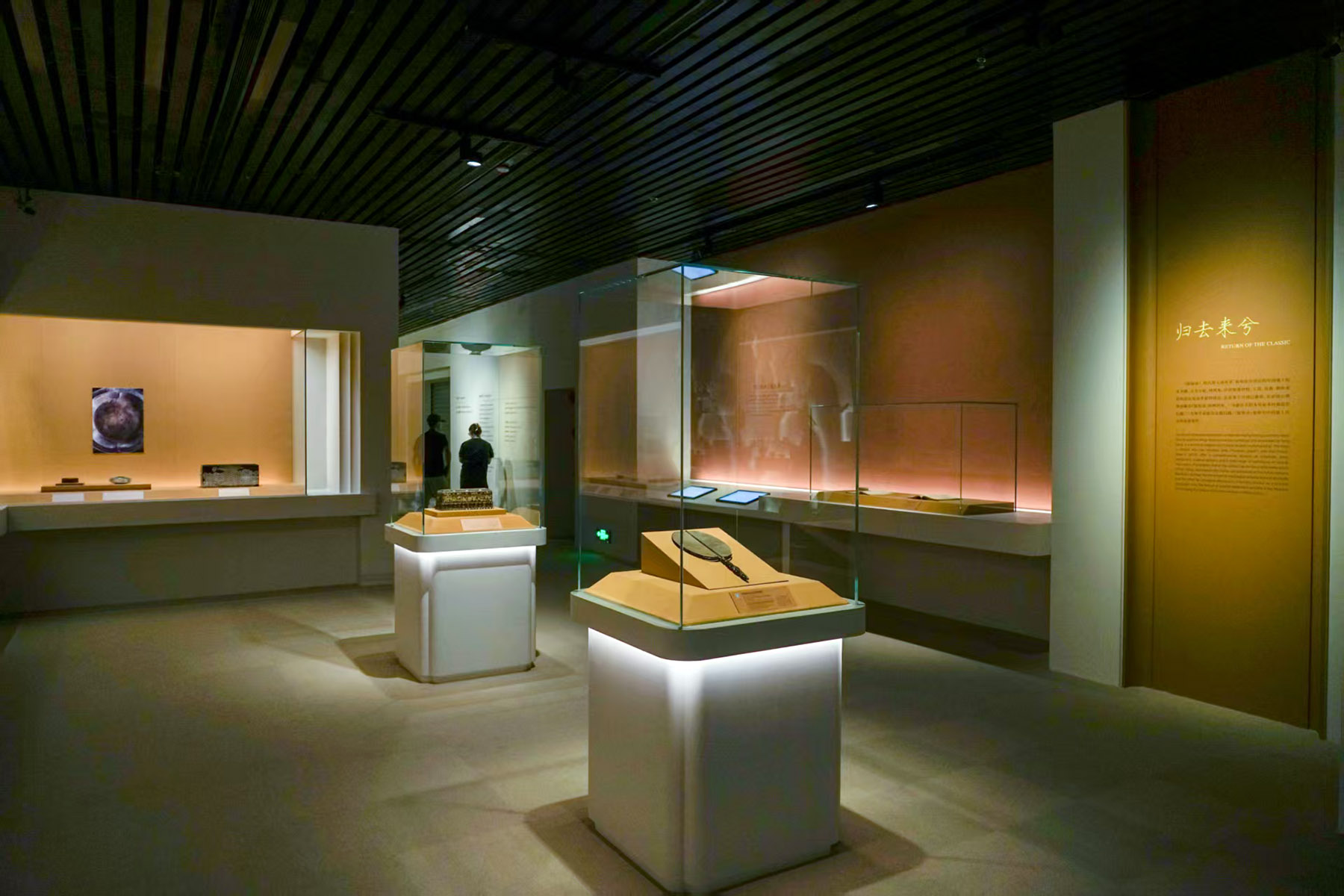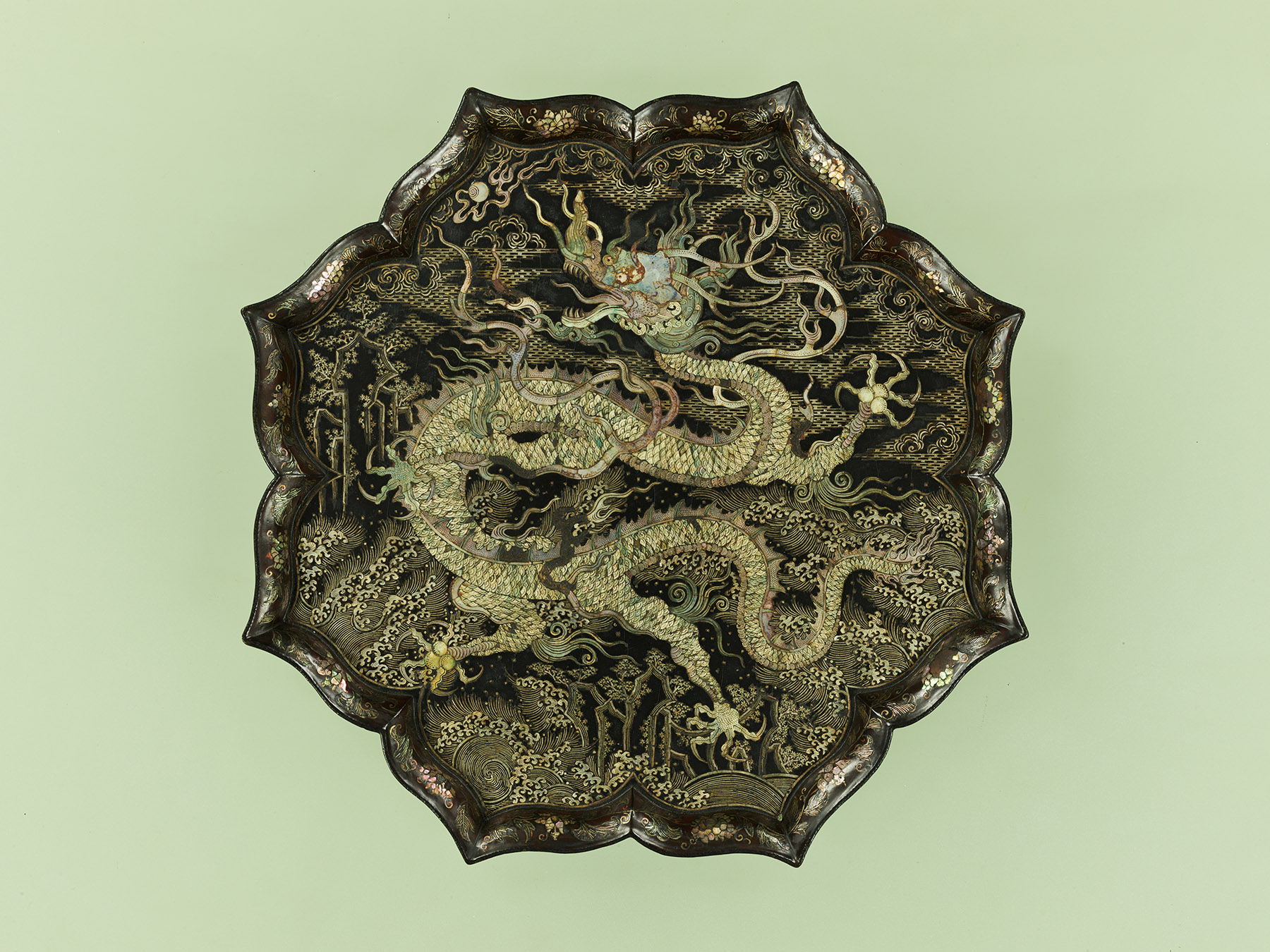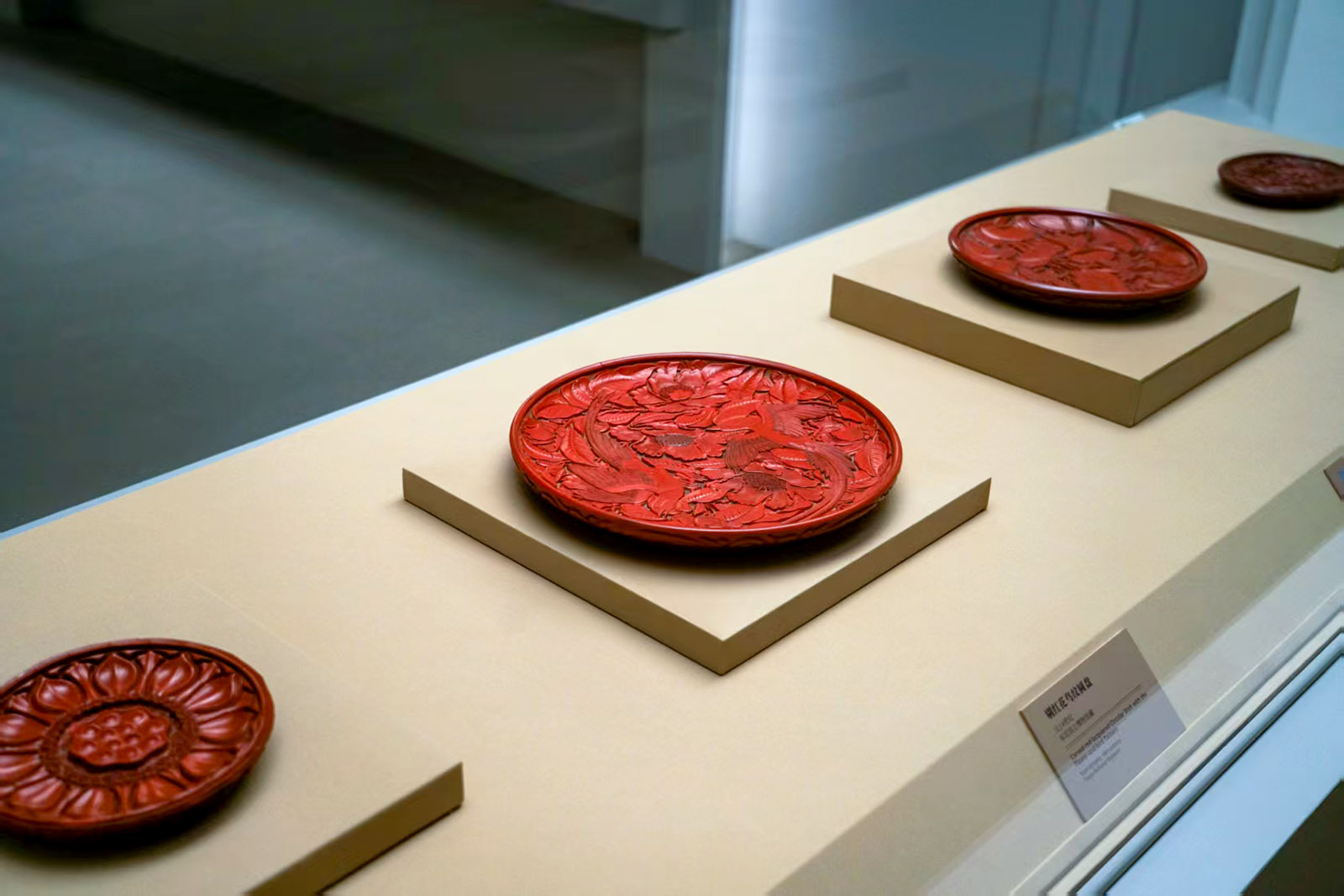
An ongoing exhibition at the Shanghai Museum showcases lacquerware not only as a crown jewel of Chinese civilization but also as a silent witness to cultural exchanges across East Asia.
When Ruby Vies with Emerald: Exquisite Lacquer of the Song, Yuan and Ming Dynasties, running at the Shanghai Museum on People's Square until Nov 13, features 127 treasured artifacts. Among these, 112 are Chinese lacquerware pieces that have been passed down as great treasures in Japan, alongside 15 selected pieces unearthed in China.
Jointly hosted by the Shanghai Museum and the Tokyo National Museum, the exhibition marks the latest achievement in the collaboration between the two institutions.
Their previous partnerships include the 2010 exhibition Masterpieces of Ancient Chinese Paintings from the Tang to Yuan Dynasty in Japanese and Chinese Collections, held at the Shanghai Museum; the 2013 Treasures of Chinese Painting from the Shanghai Museum at the Tokyo National Museum; and Journey through Asia at the Tokyo National Museum: A Joint Thematic Exhibition with the Shanghai Museum in 2016.

"Throughout the history of East Asia, Chinese culture has exerted a profound impact on its neighboring countries. Japan absorbed many aspects of Chinese civilization and developed its own distinctive traditions," says Makoto Fujiwara, executive director of the Tokyo National Museum.
He notes that artworks and handicrafts from China have long been treasured in Japan. Thanks to this shared cultural heritage, Japanese museums, art institutions and temples house many rare and precious Chinese lacquerware pieces from the Song (960-1279) and Yuan (1271-1368) dynasties. The exhibition presents a number of such exceptional works that have been preserved in Japan for generations and are now seldom seen in China.
According to Sun Feng, a researcher at the Shanghai Museum, China is one of the world's earliest civilizations to produce lacquerware using tree sap, with the earliest archaeological findings dating back more than 8,200 years.
Like bronze, jade and ceramics, Chinese lacquerware represents an essential part of the nation's great civilization. However, due to the fragility of lacquer, few artifacts have survived, making them exceptionally precious today, Sun adds.
The exhibition is organized into six chapters, beginning with Plain Lacquer with Gentle Glow. Known in Chinese as suxiu, this technique features a single color without decorative motifs. Sun explains that such pieces were highly esteemed during the Song and Yuan dynasties for their thin yet resilient bodies, graceful contours and natural luster.

Subsequent chapters highlight different lacquer art techniques, such as carved lacquer, mother-of-pearl inlay, and gold inlay.
The final chapter presents the Ming Dynasty (1368-1644) technical treatise The Record of Lacquer Decoration, written by Huang Dacheng and later annotated by Yang Ming. While the original text has been lost in China, two manuscript copies preserved at the Tokyo National Museum are on display at the exhibition.
ALSO READ: Guarding lacquerware's lustrous legacy
Other notable exhibits include the Carved, Red-lacquered Rectangular Box with the Phoenix-and-peony Pattern from the Southern Song (1127-1279) Dynasty, once listed in the Imperial Household Inventories of Japan; and from the Yuan Dynasty, the Black-lacquered and Mother-of-pearl-inlaid Dish with the Dragon-amid-waves Pattern and a Water-chestnut-flower-shaped Lobed Rim; and from the same period, the Sutra Casket with the Incised Cloud-and-phoenix Pattern Inlaid with Gold.
"Such highlights, among many others, form a constellation of lacquer brilliance," says Chu Xiaobo, director of the Shanghai Museum. "Burnished by time and cherished abroad, they have now returned to the very land that first breathed life into them, bearing silent witness to the timeless radiance of East Asian lacquer art."
Contact the writers at zhangkun@chinadaily.com.cn


